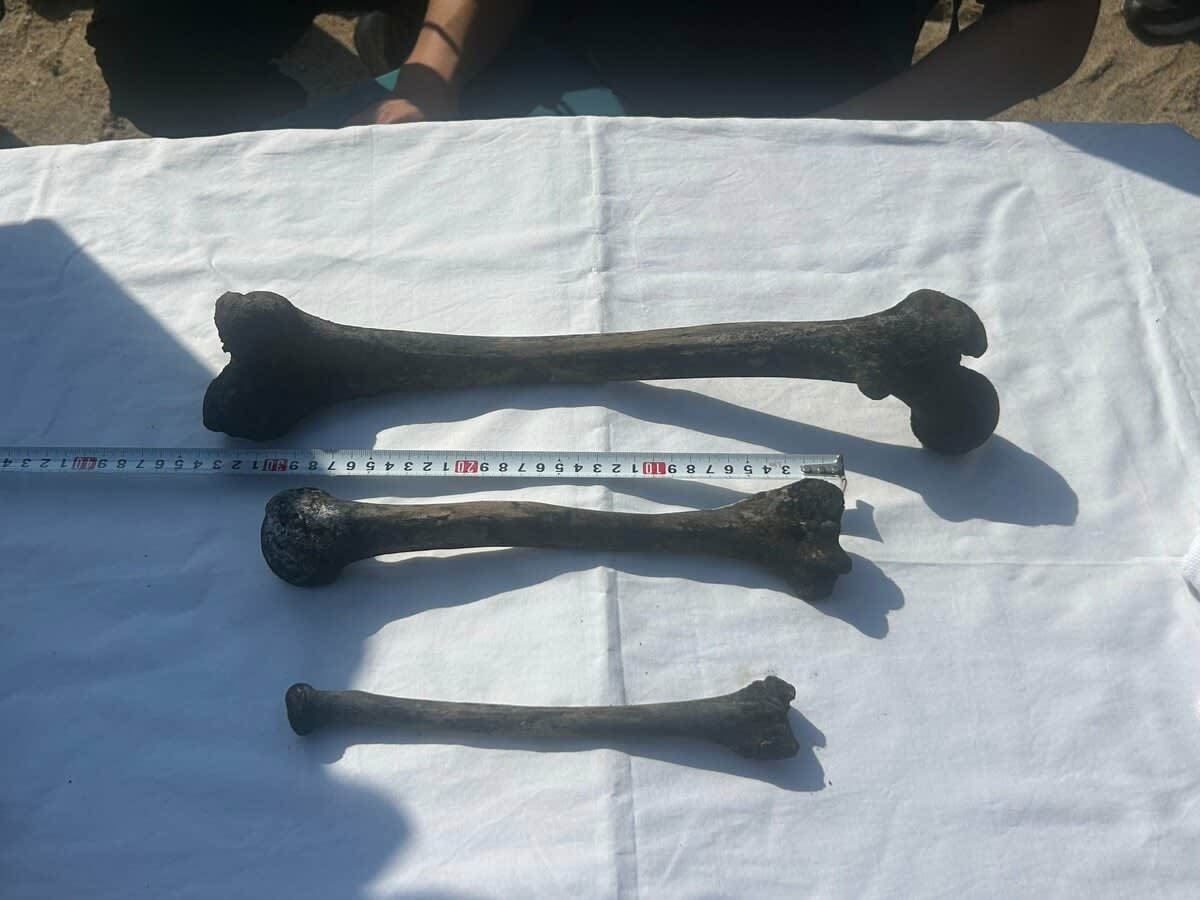In late August 2025, history surfaced from beneath the earth of western Japan. At the Chosei Mine in Yamaguchi Prefecture, once the site of a wartime tragedy, human remains were unearthed, including a skull and bone fragments. The mine disaster in 1942 killed 183 workers, 136 of them Korean laborers who had been forced to Japan under colonial rule.
The recovery, carried out by a team of Korean divers with support from the Japanese civic group Kizamu Kai, has placed fragile bones in the hands of modern politics. The remains are now with Japanese police for identification, but their meaning extends far beyond forensics. At a time when Tokyo and Seoul are cautiously rebuilding ties under Prime Minister Shigeru Ishiba and President Lee Jae Myung, the discovery has reopened difficult questions about memory, justice, and responsibility.
The Chosei Mine Disaster
The Chosei Mine once fueled Japan’s wartime industries with coal extracted from under the sea. On February 3, 1942, a sudden influx of seawater collapsed the mine’s tunnels. In moments, hundreds of men were trapped in the dark, drowning beneath the weight of the sea.
Among the 183 who perished, 136 were Koreans conscripted under Japan’s wartime labor mobilization. Many were little more than boys, uprooted from villages in Korea, separated from their families, and forced into perilous work. Their deaths were not simply the result of natural disaster but of the broader system of coercion and exploitation that had brought them there.
Although memorials exist, most victims remain entombed in the collapsed mine. The recent recovery is one of the largest in decades, making visible again a history that has too often remained buried.
Sidebar: The 1965 Treaty on Basic Relations
After years of postwar tension, Japan and South Korea normalized relations in 1965. The treaty included financial aid and loans from Japan to South Korea, which Tokyo argued settled all compensation claims related to colonial rule and wartime labor.
-
Japan’s position: All issues of reparations were resolved by the treaty.
-
South Korea’s position: The treaty did not extinguish the rights of individuals to pursue claims for personal suffering.
This disagreement remains one of the deepest sources of tension between the two nations today.
Forced Labor in Wartime Japan
From 1939 to 1945, as Japan expanded its empire and its war machine, between 700,000 and 800,000 Koreans were taken across the sea. They were placed in mines, factories, shipyards, and construction projects under conditions that met every definition of forced labor. Malnutrition, harsh discipline, and hazardous work environments were routine.
The Chosei Mine was not an exception. Similar tragedies unfolded across Japan, from coal pits in Kyushu to the notorious Hashima Island off Nagasaki, later designated a UNESCO World Heritage site amid fierce debate over how its dark history should be presented.
Survivors and descendants of forced laborers have long demanded recognition and reparations. South Korean courts have upheld their claims, but Tokyo has resisted, citing the 1965 treaty as final settlement.
Sidebar: Hashima Island and Historical Controversy
Known as “Battleship Island” because of its silhouette, Hashima once housed thousands of Korean and Chinese forced laborers during the war. In 2015, it was listed as a UNESCO World Heritage site, celebrated for its industrial heritage. Critics argued that the designation downplayed its human cost. UNESCO required Japan to acknowledge the forced labor history, but disputes over wording continue to spark protests in both countries.
The Symbolism of the Yamaguchi Discovery
The bones recovered from Chosei Mine carry a significance that transcends the individuals to whom they once belonged. For Korean activists, they are proof that history cannot be ignored. For Japanese citizens, they serve as an uncomfortable reminder that reconciliation cannot be achieved without a frank confrontation with the past.
Their discovery coincided with a moment of diplomatic optimism. Ishiba and Lee had just issued the first Japan–South Korea joint statement in 17 years, pledging partnership on global challenges. Yet the timing underscores the fragility of such progress. For every hand extended in diplomacy, there are voices demanding accountability for old wounds.
Memory, Politics, and Civil Society
While governments often falter, civic groups have stepped in to bridge silence with remembrance. Korean divers and Japanese volunteers worked together at Chosei, embodying a cross-border solidarity rooted in moral responsibility rather than political calculation.
For families of the victims, the recovered remains may one day bring closure. For activists, they strengthen demands for honesty and acknowledgment. The act of unearthing itself resists forgetting, insisting that history be faced in daylight rather than left to decay underground.
The Human Story Beneath the Soil
It is easy to speak of numbers, 183 dead, 136 Korean laborers. Harder is to imagine the lives behind those figures. Teenagers pulled from rice fields in Korea. Fathers and brothers who boarded ships to Japan never to return. Young men whose final moments were not on a battlefield but in a flooded coal tunnel, swallowed in darkness.
For their descendants, the bones recovered in 2025 are not simply artifacts of history. They are fragments of family, of identity, of injustice that refuses to fade.
A Diplomatic Test for Ishiba and Lee
Both leaders face a dilemma. Ishiba must balance Japan’s diplomatic need for partnership with the domestic unease that comes whenever wartime culpability is raised. Lee, in turn, must prove to a skeptical South Korean public that reconciliation will not mean erasure of past suffering.
How the two governments respond, whether through joint memorials, transparent investigations, or shared acknowledgment, will reveal whether their partnership is merely diplomatic performance or a genuine effort at historical reckoning.
Global Resonance
The Yamaguchi discovery also speaks to broader questions beyond Northeast Asia. Across the world, nations continue to wrestle with legacies of forced labor, slavery, colonialism, and genocide. From Holocaust memorials in Europe to debates about slavery’s legacy in the Americas, the challenge is universal: how to honor the dead and heal the living without denying what was done.
In this sense, the bones of Chosei Mine are not just Korean or Japanese. They are part of the world’s collective archive of human suffering and resilience.
Looking Ahead
The remains will undergo forensic study, but the deeper challenge is not identification. It is what the living choose to do with the truths they reveal.
Will Japan and South Korea treat this discovery as an opening for reconciliation, or will it harden into another flashpoint in their troubled history? The answer depends on whether leaders, citizens, and communities on both sides are willing to honor the dead with honesty, empathy, and courage.
Conclusion
The unearthed remains at Chosei Mine remind us that history does not stay buried. Bones resurface, memories return, and injustices echo until they are acknowledged.
As Japan and South Korea stand at the threshold of a renewed partnership, the voices from beneath Yamaguchi’s soil demand to be heard. Reconciliation cannot rest on forgetting. It must be built upon memory, justice, and the will to face the past with unflinching clarity.

